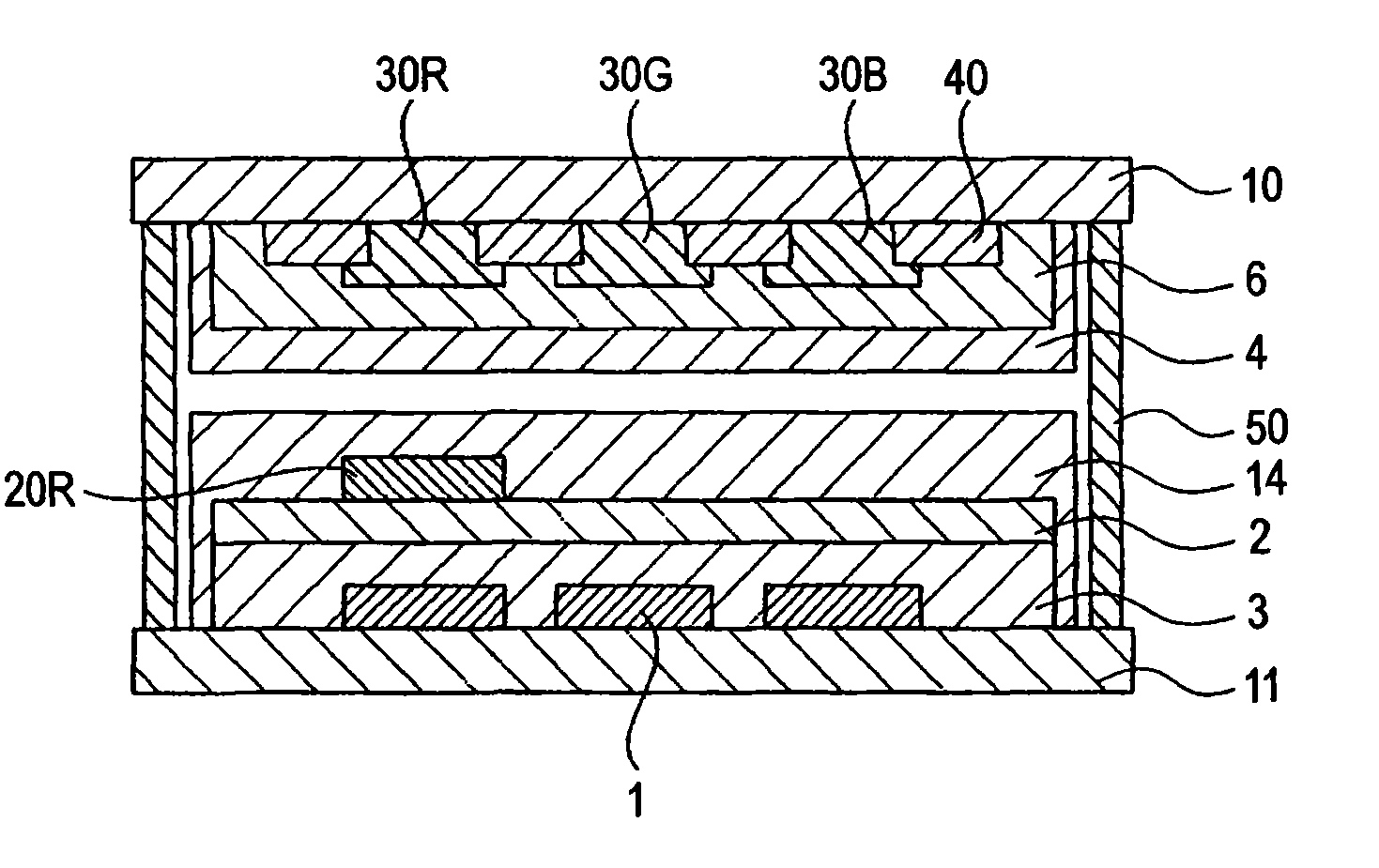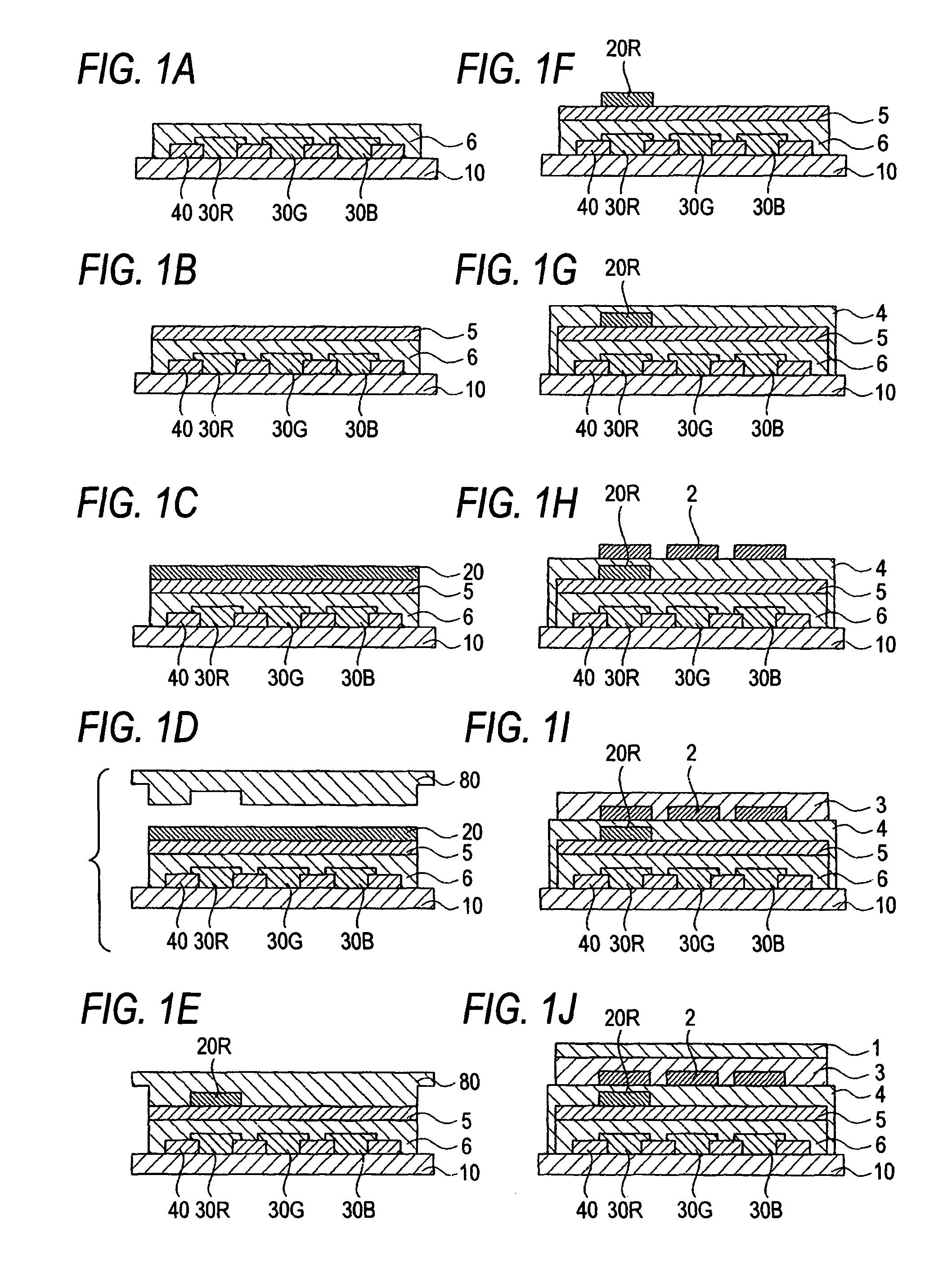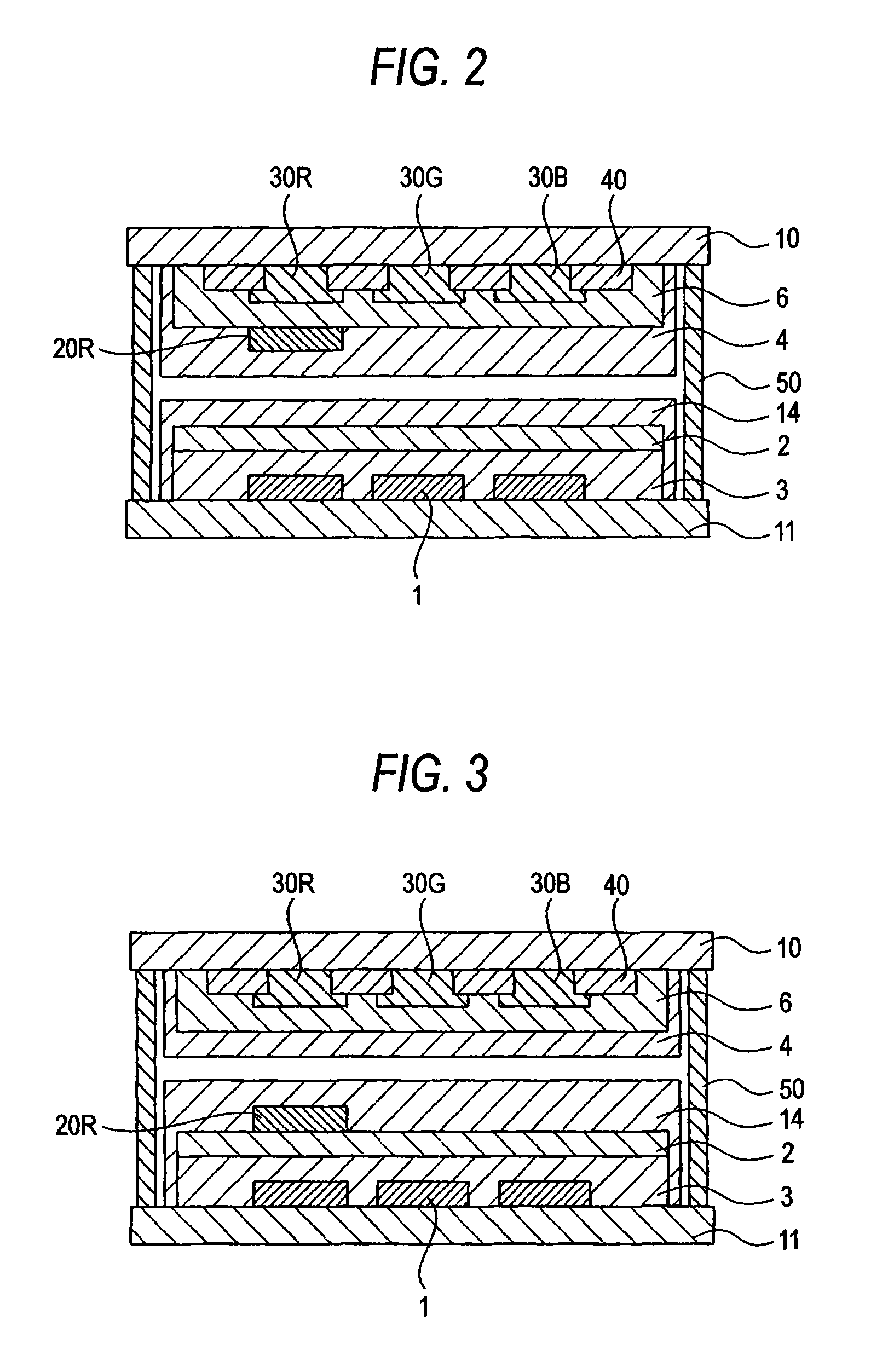Method of patterning color conversion layer and method of manufacturing organic el display using the patterning method
a technology of color conversion layer and organic el, which is applied in the manufacture of electrode systems, electric discharge tubes/lamps, discharge tubes luminescnet screens, etc., can solve the problems of reducing yield, affecting the quality of organic el, etc., to achieve high-definition display, easy and economical manufacturing, and large surface area
- Summary
- Abstract
- Description
- Claims
- Application Information
AI Technical Summary
Benefits of technology
Problems solved by technology
Method used
Image
Examples
example 1
[0077]According to procedures in the following processes (1) to (8), a multiple color light emitting organic EL display according to the invention was produced.
(1) Formation of the Color Filter Layer 30
[0078]With 1737 glass (manufactured by Corning Inc.) used as the transparent substrate 10, and with black matrix material (CK-7001: manufactured by FUJIFILM Electronic materials Co., Ltd.), red color filter layer material (CR-7001: manufactured by FUJIFILM Electronic materials Co., Ltd.), green color filter layer material (CG-7001: manufactured by FUJIFILM Electronic materials Co., Ltd.) and blue color filter layer material (CB-7001: manufactured by FUJIFILM Electronic materials Co., Ltd.) used thereon, the black matrix 40 and the color filter layers 30R, 30G and 30B are formed thereon. The thickness of each layer was 1 μm.
[0079]The dimensions of each of the sub-pixels of the formed color filter layer were 100 μm×30 μm and the spacing between the sub-pixels (namely the inter-pixel spa...
examples 2 , 3 and 4
Examples 2, 3 and 4, and Comparison Example 5
[0091]In the patterning of the color conversion layer 20, with the processes made similar to those in the example 1 except that the respective heating temperatures of the mold 84 were changed, organic EL displays of examples 2, 3 and 4 and comparison example 5 were obtained.
PUM
| Property | Measurement | Unit |
|---|---|---|
| width | aaaaa | aaaaa |
| thickness | aaaaa | aaaaa |
| thickness | aaaaa | aaaaa |
Abstract
Description
Claims
Application Information
 Login to View More
Login to View More - R&D
- Intellectual Property
- Life Sciences
- Materials
- Tech Scout
- Unparalleled Data Quality
- Higher Quality Content
- 60% Fewer Hallucinations
Browse by: Latest US Patents, China's latest patents, Technical Efficacy Thesaurus, Application Domain, Technology Topic, Popular Technical Reports.
© 2025 PatSnap. All rights reserved.Legal|Privacy policy|Modern Slavery Act Transparency Statement|Sitemap|About US| Contact US: help@patsnap.com



